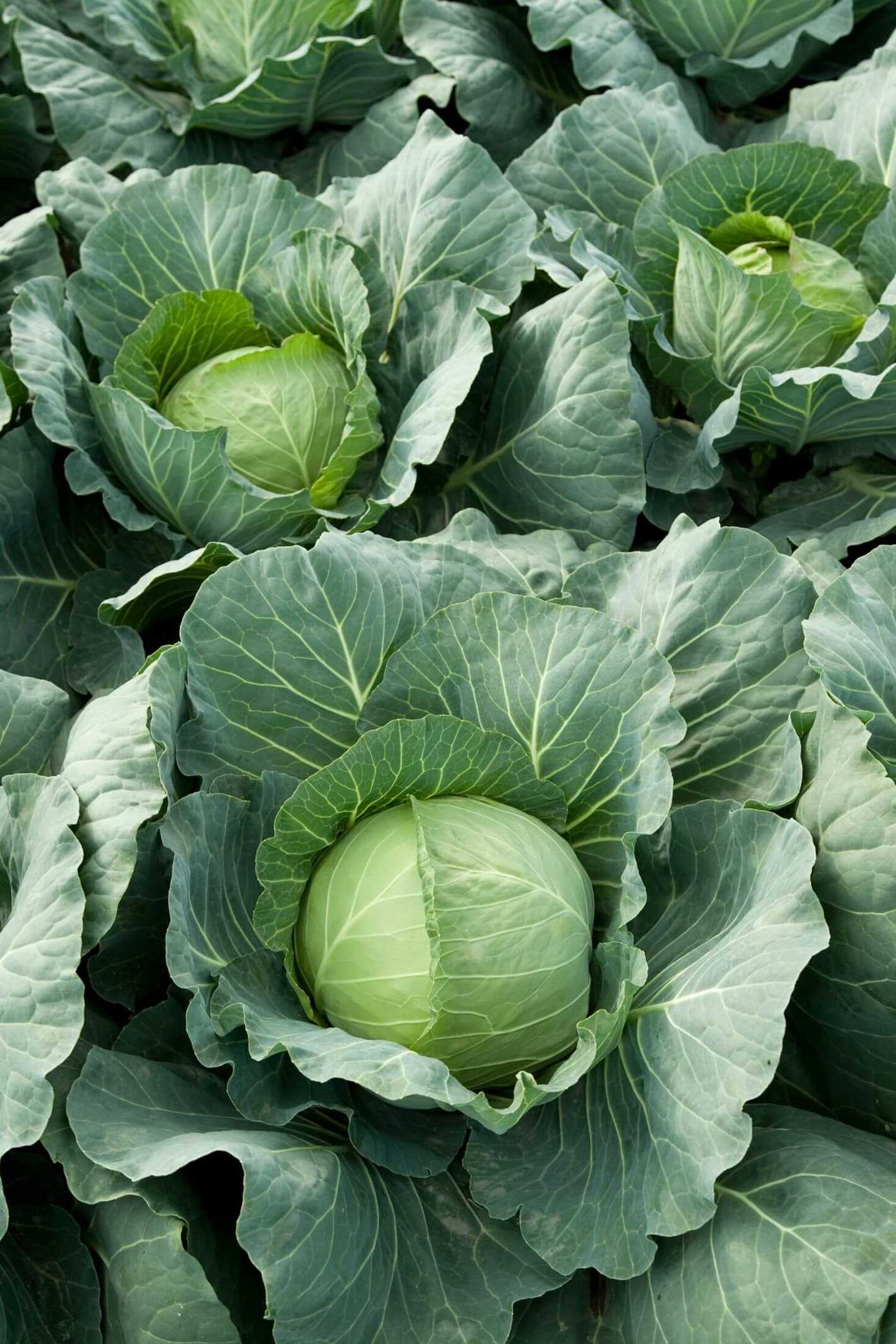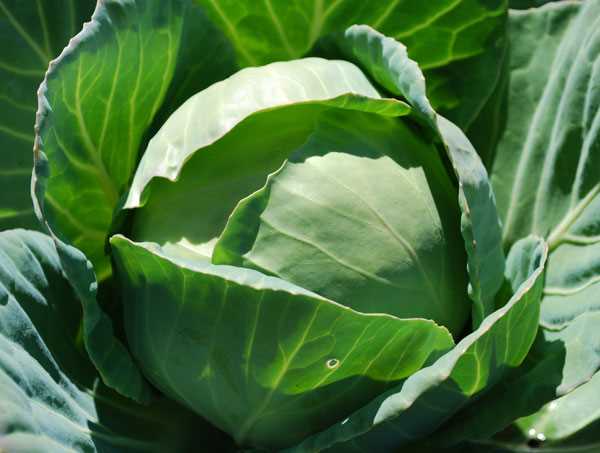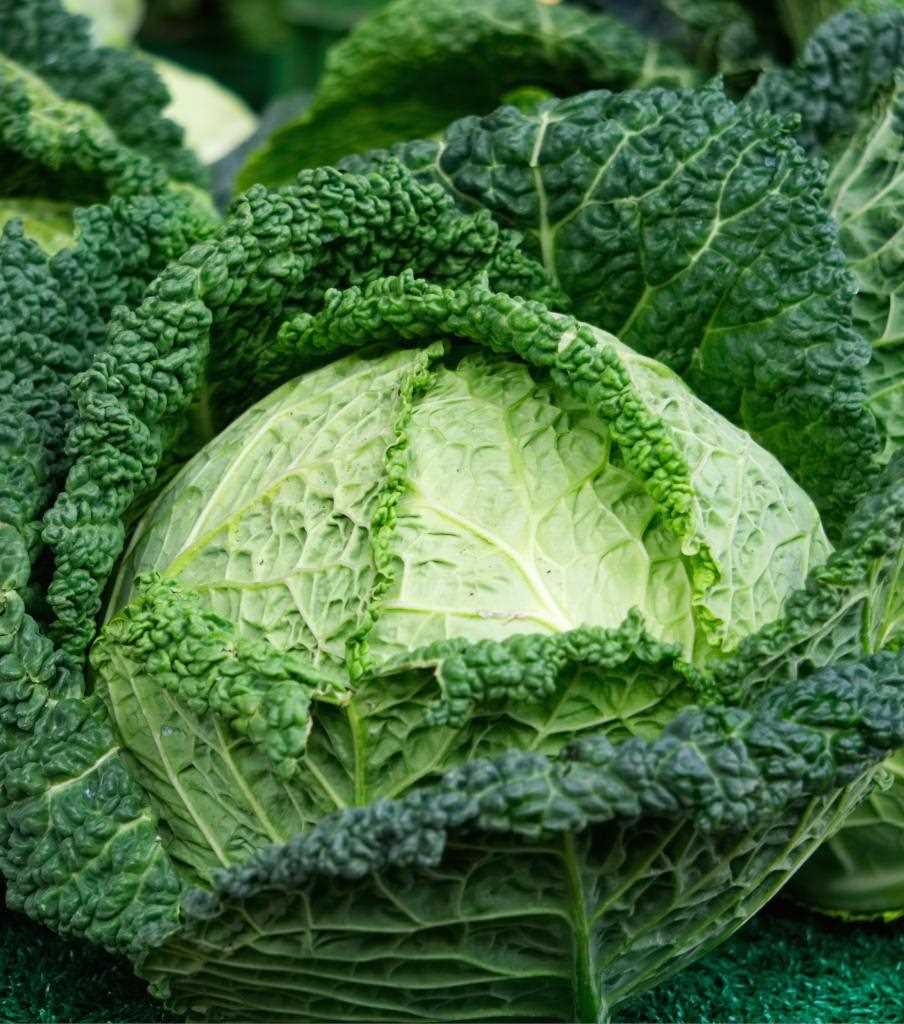- Choosing the right location
- Sunlight
- Soil
- Protection from wind
- Space
- Companion plants
- Location rotation
- Preparing the soil
- 1. Choose a sunny location:
- 2. Clear the area:
- 3. Loosen the soil:
- 4. Amend the soil:
- 5. Test the soil:
- 6. Level the soil:
- 7. Consider crop rotation:
- Sowing and transplanting
- Watering and fertilizing
- Watering
- Fertilizing
- Pest and disease control
- Pest control
- Disease control
- Harvesting and storage
- Storage
- Freezing
- Popular Savoy cabbage varieties
- Cooking and serving suggestions
- 1. Sauteed Savoy Cabbage
- 2. Stuffed Savoy Cabbage Rolls
- 3. Braised Savoy Cabbage
- 4. Savoy Cabbage Salad
- 5. Steamed Savoy Cabbage
- 6. Savoy Cabbage Rolls
- 7. Roasted Savoy Cabbage
- “Question-Answer”
- What are some popular varieties of Savoy cabbage?
- When is the best time to plant Savoy cabbage?
- How should I prepare the soil for growing Savoy cabbage?
- What are some common pests and diseases that affect Savoy cabbage?
- How often should I water Savoy cabbage plants?
- Can I grow Savoy cabbage in containers?
- “Video” Growing Cabbages from Sowing to Harvest
If you’re looking to add a versatile and nutrient-rich vegetable to your garden, look no further than the Savoy cabbage. This leafy green vegetable is not only delicious but also packed with vitamins and minerals that are essential for a healthy diet. In addition to its nutritional value, Savoy cabbage is also a great plant for beginner gardeners as it is relatively easy to grow and care for.
One of the key characteristics of the Savoy cabbage is its wrinkled and crinkly leaves, which give it a unique texture and appearance. This variety of cabbage is known for its mild and sweet flavor, making it perfect for a range of culinary uses. Whether you’re using it in a stir-fry, soup, or salad, the Savoy cabbage will add a delicious and healthy element to your dishes.
When it comes to growing Savoy cabbage in your vegetable garden, there are a few important tips to keep in mind. First, it’s important to choose a location that receives full sun and has well-draining soil. Savoy cabbage thrives in cooler weather, so planting it in the spring or fall is ideal. Make sure to provide regular watering, as consistent moisture is crucial for the success of your cabbage plants.
There are several popular varieties of Savoy cabbage that you can choose from for your garden. One popular variety is the ‘Tundra’ cabbage, which is known for its compact size and excellent cold tolerance. Another popular variety is the ‘Alcosa’, which produces large heads with a sweet flavor. Other varieties to consider include the ‘Melissa’, ‘Winter King’, and ‘January King’.
Choosing the right location
When growing savoy cabbage, it is important to choose the right location in your vegetable garden. Here are some factors to consider:
Sunlight
Savoy cabbage requires at least 6 hours of direct sunlight per day to thrive. Choose a location that receives ample sunlight and is not shaded by trees or buildings.
Soil
The soil should be well-draining and rich in organic matter. Savoy cabbage prefers a slightly acidic soil with a pH between 6.0 and 6.8. Test your soil’s pH and make amendments if necessary before planting.
Protection from wind
Strong winds can damage the tender leaves of savoy cabbage, so choose a location that provides some protection from wind. Planting them near a fence or other structure can help shield them from strong gusts.
Space
Savoy cabbage plants require adequate space to grow and spread. Allow at least 18 inches (45 cm) between each plant to ensure proper airflow and prevent overcrowding.
Companion plants

Savoy cabbage can benefit from companion planting with plants such as celery, dill, and onions. These plants can help repel pests and improve the overall health of the cabbage plants.
Location rotation
It is important to rotate the location of your cabbage plants each year to prevent the buildup of pests and diseases in the soil. Avoid planting cabbage in the same spot more than once every three years.
By considering these factors, you can choose the right location for growing savoy cabbage in your vegetable garden and ensure healthy and productive plants.
Preparing the soil
Before planting savoy cabbage, it’s important to prepare the soil to ensure optimal growing conditions for the plants. Here are some steps to follow:
1. Choose a sunny location:
Select a spot in your vegetable garden that receives full sun for at least 6-8 hours a day. Savoy cabbage thrive in sunny conditions and require ample sunlight to grow and develop healthy heads.
2. Clear the area:

Remove any weeds, rocks, or debris from the area where you plan to plant your savoy cabbage. Weeds can compete with the cabbage for essential nutrients and can hinder their growth.
3. Loosen the soil:
Using a garden fork or a tiller, loosen the soil to a depth of at least 8-10 inches. This will improve the soil’s drainage and aeration, allowing the cabbage roots to penetrate easily and promote healthy growth.
4. Amend the soil:
If your soil is heavy or clay-like, you may need to amend it to improve its texture and fertility. Add organic matter such as compost, well-rotted manure, or leaf mold to the soil. Mix it thoroughly to ensure an even distribution of nutrients and improve the soil’s moisture retention capacity.
5. Test the soil:

It’s always a good idea to test your soil’s pH level and nutrient content before planting. This will help you determine if any additional amendments are needed. Savoy cabbage prefers a slightly acidic soil with a pH range of 6.0-6.8. If necessary, adjust the pH level by adding lime to raise it or sulfur to lower it.
6. Level the soil:
Rake the soil surface to create a level and smooth planting bed. This will facilitate even germination and growth of the cabbage plants.
7. Consider crop rotation:
As with any vegetable, it’s best to practice crop rotation to prevent the buildup of pests or diseases in the soil. Avoid planting savoy cabbage in the same spot where any other cabbage family crop was grown in the past three years.
By preparing the soil properly, you can create a favorable environment for your savoy cabbage to thrive and produce delicious, nutritious heads.
Sowing and transplanting
Before sowing savoy cabbage seeds, it is important to prepare the soil in your vegetable garden. Choose a sunny location with well-draining soil. Savoy cabbage prefers rich, fertile soil, so it is a good idea to incorporate organic matter, such as compost or well-rotted manure, into the soil before planting.
Sow the seeds in early spring, starting them indoors about 6-8 weeks before the last frost date in your area. Fill seed trays or small pots with seed starting mix and plant the seeds about ¼ inch deep. Water the soil lightly to keep it moist, but not saturated.
Once the seeds have germinated and the seedlings have developed their first true leaves, it is time to transplant them into the garden. Harden off the seedlings by gradually exposing them to outdoor conditions over a period of 7-10 days. This can be done by placing them outside for a few hours each day, gradually increasing the amount of time they spend outside.
When the seedlings are ready to be transplanted, choose a cloudy or cool day to minimize stress. Dig a hole in the prepared soil that is slightly larger than the root ball of the seedling. Carefully remove the seedling from its container, making sure not to disturb the roots too much. Place the seedling in the hole, making sure it is at the same level as it was in the container. Fill in the hole with soil and gently firm it around the base of the seedling.
Space the transplanted seedlings about 12-18 inches apart to allow for their growth. Water the newly transplanted seedlings thoroughly and continue to water them regularly throughout the growing season. Mulching around the plants can help conserve moisture and suppress weed growth.
By following these sowing and transplanting guidelines, you can successfully grow savoy cabbage in your vegetable garden.
Watering and fertilizing
Proper watering and fertilizing are essential for growing healthy and productive savoy cabbage plants. Here are some tips to keep in mind:
Watering
Savoy cabbage plants need consistent moisture to thrive, so it’s important to keep them adequately watered throughout their growing season. Here are some guidelines for watering:
- Water the plants deeply and regularly, aiming to provide about 1-1.5 inches of water per week.
- Avoid overwatering, as this can lead to root rot and other moisture-related diseases. Make sure the soil is well-drained to prevent waterlogging.
- Water the plants at the base, rather than from above, to minimize the risk of foliar diseases and promote healthier growth.
- It’s best to water early in the morning or late in the afternoon, as this allows the foliage to dry before evening, reducing the risk of fungal infections.
- Monitor the soil moisture regularly, especially during hot and dry periods, and adjust the watering schedule accordingly.
Fertilizing
Providing adequate nutrients is crucial for the growth and development of savoy cabbage plants. Here are some tips for fertilizing:
- Before planting, incorporate well-rotted organic matter, such as compost or aged manure, into the soil to improve its fertility.
- Apply a balanced fertilizer, such as a 10-10-10 or 14-14-14 NPK formulation, at planting time to provide the initial nutrient boost.
- Side-dress the plants with nitrogen-rich fertilizer, such as blood meal or fish emulsion, when they reach the stage of active growth.
- Repeat the side-dressing every 3-4 weeks throughout the growing season to ensure a steady supply of nutrients.
- Avoid excessive use of nitrogen, as this can lead to lush foliage growth at the expense of cabbage head formation.
- Monitor the plants for any signs of nutrient deficiencies, such as yellowing leaves or stunted growth, and adjust the fertilization accordingly.
By following these watering and fertilizing tips, you can ensure that your savoy cabbage plants receive the necessary care and nutrients for optimal growth and production.
Pest and disease control
Pest and disease control is an important aspect of growing Savoy cabbage. By implementing certain measures, you can prevent common pests and diseases from infesting your plants and ensure a healthy crop. Here are some effective control methods:
Pest control
- Aphids: These small insects can cause damage by sucking the sap from plants. To control aphids, regularly inspect your plants and remove any infested leaves. You can also use an insecticidal soap or a strong stream of water to wash them away.
- Cabbage loopers: These green caterpillars can eat through leaves, causing severe damage. Handpick them off the plants and consider using floating row covers to prevent infestation.
- Slugs and snails: These slimy creatures can chew holes in the foliage. Use organic slug pellets or set up traps to reduce their population. Removing any debris or plant matter where they can hide will also help control them.
- Cabbage root fly: The larvae of this fly can damage the roots, causing the plants to wilt and die. To control cabbage root fly, use barriers such as collars or fleece around the base of the plants. Avoid planting Savoy cabbage in the same spot every year.
Disease control
- Clubroot: This fungal disease causes stunted growth and deformed roots. To prevent clubroot, ensure proper drainage and pH levels in the soil. Rotate your crops and refrain from planting Savoy cabbage in the same area for several years.
- Black rot: This bacterial disease causes V-shaped yellow lesions on the leaves. To control black rot, remove and destroy affected plants immediately. Practice crop rotation and avoid overhead watering to prevent the spread of the bacteria.
- Downy mildew: This fungal disease leads to a fuzzy gray or purple growth on the undersides of leaves. To control downy mildew, ensure good air circulation and avoid overhead watering. Use fungicides if necessary, following the instructions on the label.
- White mold: This fungal disease causes white, fluffy growth on the lower leaves and stems. To control white mold, remove affected plant parts and ensure proper spacing between plants. Avoid overhead watering and provide adequate ventilation to prevent high humidity.
Implementing proper pest and disease control measures is vital for the success of your Savoy cabbage crop. By taking proactive steps, you can prevent damage and maintain healthy plants throughout the growing season.
Harvesting and storage
Harvesting savoy cabbage is a straightforward process, as the heads are typically ready to be picked when they reach their full size and have a firm texture. It’s important to monitor the cabbage plants closely, as they can mature quickly. Look for heads that are dense and feel heavy when lifted.
To harvest the savoy cabbage, use a sharp knife to cut the head off the stalk, leaving a few outer leaves intact. This will help protect the head during storage. It’s best to harvest the cabbage in the morning when the leaves are still crisp and before the heat of the day causes them to wilt.
After harvesting, it’s important to store the savoy cabbage properly to maintain its freshness and flavor. Cabbage can be stored for several weeks if stored correctly.
Storage
1. Remove any damaged or wilted leaves from the cabbage heads.
2. Keep the outer leaves intact, as they help protect the head.
3. Store the cabbage heads in a cool, dry, and dark place, such as a root cellar or a vegetable crisper in the refrigerator.
4. If storing in the refrigerator, wrap the cabbage heads loosely in plastic wrap or place them in a perforated plastic bag to maintain humidity.
5. Avoid storing cabbage near fruits, as they release ethylene gas, which can cause the cabbage to spoil faster.
Freezing
If you have an abundance of savoy cabbage and want to preserve it for longer periods, freezing is a great option.
1. Blanch the cabbage by boiling it in water for about 2-3 minutes, then immediately transfer it to an ice bath to cool.
2. Drain the cooled cabbage and pat it dry with paper towels.
3. Divide the cabbage into portion-sized pieces and place them in airtight freezer bags or containers, removing as much air as possible.
4. Label the bags or containers with the date and store them in the freezer.
5. Frozen savoy cabbage can be stored for up to 12 months. Thaw it before using it in recipes.
By following these harvesting and storage tips, you can enjoy the fresh and nutritious taste of savoy cabbage long after it has been harvested from your garden.
Popular Savoy cabbage varieties
There are several popular varieties of Savoy cabbage that you can consider growing in your vegetable garden:
Gloria: Known for its large, round heads and deep green color, Gloria is a popular variety that is resistant to diseases and is suitable for both spring and fall plantings.
Famosa: Famosa is a vigorous variety that produces large, well-rounded heads with crinkled leaves. It has a sweet flavor and is perfect for making coleslaw or adding texture to soups and stews.
Avalon: This variety is known for its early maturity and excellent disease resistance. It produces medium-sized heads with tightly packed leaves and has a crisp texture and mild flavor.
Vitamin King: As the name suggests, this variety is rich in vitamins and minerals. It has dark green leaves and a dense head. Vitamin King is resistant to frost and is suitable for both early and late harvests.
Alcosa: Alcosa is a popular variety that is known for its uniform, cone-shaped heads. It has a mild flavor and tender leaves. Alcosa is resistant to diseases and adapts well to various growing conditions.
These are just a few examples of popular Savoy cabbage varieties. Each variety has its own unique characteristics, so be sure to choose the one that best suits your taste preferences and growing conditions.
Cooking and serving suggestions
Savoy cabbage is a versatile and delicious vegetable that can be prepared in a variety of ways. Here are some popular cooking and serving suggestions for this tasty cabbage:
1. Sauteed Savoy Cabbage
Sauteed Savoy cabbage is a simple and flavorful dish that can be served as a side or main course. To make it, heat olive oil in a pan and add thinly sliced Savoy cabbage. Cook until the cabbage is tender and slightly browned. Season with salt, pepper, and your choice of spices.
2. Stuffed Savoy Cabbage Rolls
Savoy cabbage is the perfect cabbage variety for making stuffed cabbage rolls. Blanch the cabbage leaves to soften them, then stuff each leaf with a filling of your choice, such as ground meat, rice, and vegetables. Roll the leaves tightly and secure with toothpicks. Bake in the oven with a flavorful sauce until the rolls are cooked through.
3. Braised Savoy Cabbage
Braised Savoy cabbage is a comforting and hearty dish that pairs well with roasted meats or poultry. Slice the cabbage and cook it in a large pot with butter, onions, and garlic until wilted. Add stock, seasonings, and your choice of herbs. Simmer for a few hours until the cabbage is tender and the flavors have melded together.
4. Savoy Cabbage Salad
Savoy cabbage can also be enjoyed raw in salads. Shred the cabbage and toss it with your favorite salad ingredients, such as carrots, radishes, and cherry tomatoes. Dress the salad with a vinaigrette or creamy dressing for a refreshing and crunchy side dish.
5. Steamed Savoy Cabbage
Steaming Savoy cabbage is a quick and healthy way to cook this vegetable. Cut the cabbage into wedges or leaves and steam until tender. Serve it as a side dish or incorporate it into stir-fries, soups, or stir-fries.
6. Savoy Cabbage Rolls
Another delicious way to enjoy Savoy cabbage is to make cabbage rolls. Remove the outer leaves and blanch them briefly in boiling water. Fill each leaf with a mixture of cooked rice, ground meat, onions, and herbs. Roll up tightly and place in a baking dish. Top with tomato sauce and bake until the rolls are cooked through and the sauce is bubbly.
7. Roasted Savoy Cabbage

Roasting Savoy cabbage brings out its natural sweetness and creates a crispy exterior. Cut the cabbage into wedges, drizzle with olive oil, and season with salt, pepper, and your choice of spices. Roast in a hot oven until the edges are browned and crispy. Serve as a side dish or use it as a topping for sandwiches or burgers.
These are just a few ideas for cooking and serving Savoy cabbage. Experiment with different flavors and techniques to discover your favorite way to enjoy this nutritious and tasty vegetable.
“Question-Answer”
What are some popular varieties of Savoy cabbage?
Some popular varieties of Savoy cabbage include ‘Alcosa’, ‘Glen’, ‘Tundra’, and ‘Wintessa’.
When is the best time to plant Savoy cabbage?
The best time to plant Savoy cabbage is in early spring or late summer, depending on your climate.
How should I prepare the soil for growing Savoy cabbage?
You should prepare the soil for growing Savoy cabbage by adding compost or well-rotted manure to improve its fertility and drainage.
What are some common pests and diseases that affect Savoy cabbage?
Some common pests and diseases that affect Savoy cabbage include cabbage worms, aphids, clubroot, and black rot.
How often should I water Savoy cabbage plants?
You should water Savoy cabbage plants regularly, keeping the soil consistently moist but not waterlogged.
Can I grow Savoy cabbage in containers?
Yes, you can grow Savoy cabbage in containers as long as the container is large enough and has good drainage.







